About Us
Proudly serving Windsor & Lasalle for over 25 years. Choose one of our available rooms to book your event or party. Enjoy a night out with good food, good company and good times.
WE’RE YOUR ONE-STOP-SHOP FOR BILLIARDS, DRAUGHT BEER, FOOD, EVENTS & PARTIES
FOOD
Whether you’re hungry for a charbroiled burger, award-winning wings, smoked ribs, pizza, or house made soups, we have it all for you! The kitchen is open from 11am to midnight just about every day (special hours for some Holidays).
Check out our Take-Out Menu for daily specials.
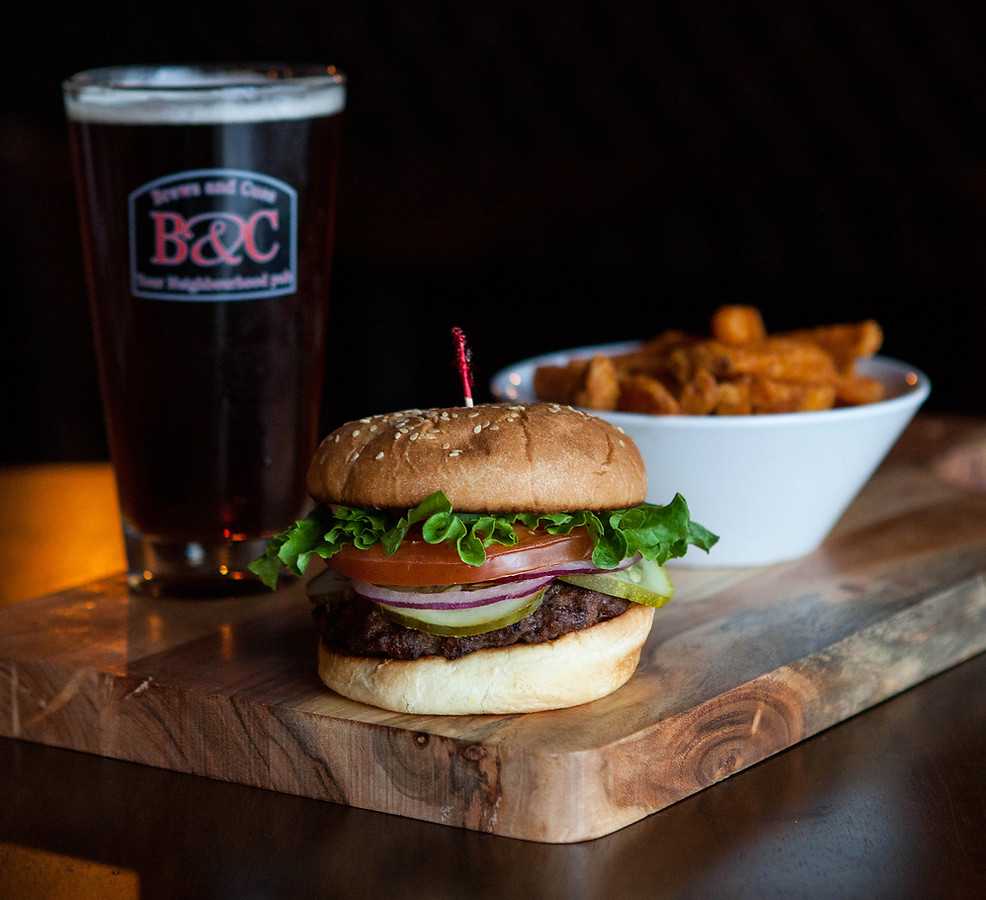
BILLIARDS
With 12 pool tables you’ll never have to wait long to chalk up and play a rack or two. We feature 10 Diamond Billiards and 2 VNEA regulation 3½-foot by 7-foot tables (coin ops). Challenge our house pro to a game, or rent a table for the night. Either way we promise you’ll have a great time!
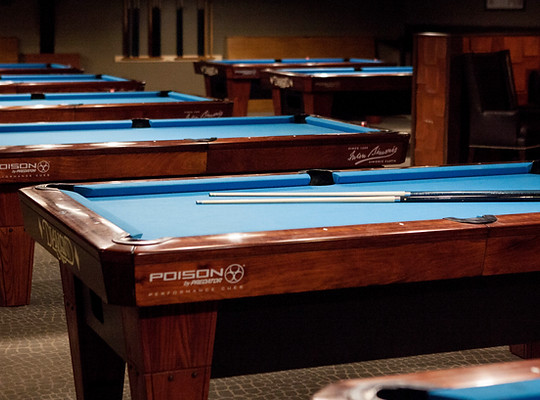
Mind Your Sticks, Balls and Holes
“billiards Etiquette”
The pool room can be an intimidating place if you are not familiar with its unspoken code of conduct. This short guide will help you learn the basics of proper behavior in order to avoid embarrassment, thrown drinks, glove slaps or worse. Playing in a bar with your friends doesn’t call for the same sense of decorum as playing in the World Championships, but proper etiquette is important to becoming a better player and to increasing your enjoyment of the game.
Here are the top ten ways to play it cool, fool:
FAKE
1. Find a seat and sit in it.
Unlike in “The Color of Money”, where there were no chairs at the pool tournament and both players stood at the table, serious pool is played with only one person at the table at a time.
2. WATCH THE SMALL TALK.
If you’re a chatterbox and you’re getting monosyllabic responses or the stink-eye from your opponent, chances are he or she would rather play than listen to your commentary.
3. NO DRINKS, BUTTS OR BUTTOCKS ON THE TABLE.
Want a sure-fire way to get kicked out of your local establishment? Just spill your soda, burn the cloth with your
cigarette or treat the table like a park bench and a bouncing you will go.
4. Chalk with class.
The proper way to chalk is to hold your cue in one hand, gently swiping chalk onto the cue tip with the other. Don’t twist or spin the chalk on the cue or vice versa. Make sure to put the chalk back on the table business side up – if you don’t, the rails will be covered in blue dust and so will your clothing.
5. Easy on the white powder, Lindsay Lohan.
Talcum powder is an excellent way to keep your hands dry so that the cue stick moves smoothly, but if you’re leaving white residue on the table, you’re using too much.
6. Mind your stick.
Please don’t be “that guy.” You are not Tom Cruise and a pool cue is not a Samurai sword, a baton or a baseball bat. Make sure to rest cues in a secure spot; Cues propped up against the side of the table will fall over.
7. Know the rules of the game.
If you are playing in a league or tournament, take the time to familiarize yourself with the official rules. If you are playing casually, make sure to agree upon the rules before hand to avoid conflicts later.
8. Be on your best behaviour at leagues and tournaments.
We pool players take these things very seriously. Be extra careful not to move or talk while your opponent is shooting.
9. Chill out.
Deal with your anger management issues in therapy – don’t vent your spleen in the pool room or no one will play with you.
10. There is a difference between losing and being a loser.
There’s no crying in pool. Everybody loses from time to time but only losers badmouth opponents, refuse to shake hands, or break their cues. Don’t break your cue, send it to me instead so I can sell it on eBay.
DRAUGHT BEER
With 12 draught lines, you’ll be sure to find a Brew that’s right for you! We’re proud to showcase the area’s largest Ontario Craft Brewers draught selection. Not only are these beers tasty, but they’re also fresh and locally produced.
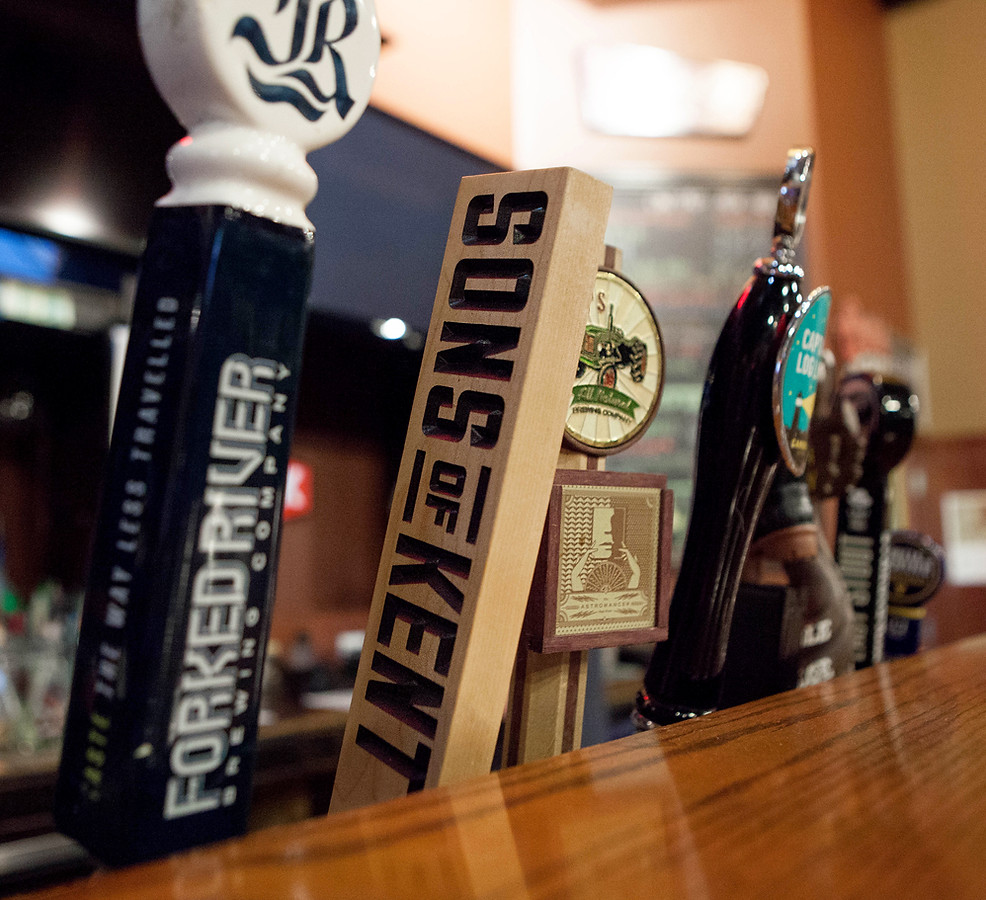

Faaaake
Pale Straw - Straw
Light American Lager
Berliner Weisse
Pale Straw - Pale Gold
Standard American Lager
Witbier
German Pilsner
Cream Ale
Pale Straw - Deep Gold
Premium American Lager
Weizen/ Weissbier
Straw - Deep Gold
Munich Helles
Classic American Pilsner
Blonde Ale
American Wheat or Rye
Belgian Golden Strong Ale
Straight (Unblended) Lambic
Gueuze
Fruit Lambic
Kölsch
Bohemian Pilsner
Pale Gold - Deep Gold
Dortmunder Export
Belgian Blond Ale
Belgian Tripel
Pale Gold - Medium Amber
Standard/ Ordinary Bitter
American Pale Ale
Saison
Pale Gold - Deep Amber
Special/ Best/ Premium Bitter
FAKE
Deep Gold - Pale Amber
Maibock/ Helles Bock
Deep Gold - Deep Amber
American IPA
Deep Gold - Amber Brown
Extra Special/ Strong Bitter (English Pale Ale)
Bière de Garde
Deep Gold - Ruby Brown
Doppelbock
Deep Gold - Medium Amber
Oktoberfest/ Märzen
English IPA
Belgian Pale Ale
Deep Gold - Deep Amber
Imperial IPA
Deep Gold - Brown
English Barleywine
Pale Amber - Deep Amber
Scottish Light 60/ Heavy 70/ Export 80
Vienna Lager
Flanders Red Ale
American Amber Ale
Belgian Dubbel
Düsseldorf Altbier
FakE
Pale Amber - Amber Brown
Irish Red Ale
American Barleywine
Pale Amber - Medium Amber
California Common Beer
Pale Amber - Brown
Old Ale
Medium Amber - Brown
Northern English Brown Ale
Belgian Dark Strong Ale
Classic Rauchbier
Medium Amber - Ruby Brown
Mild
Weizenbock
Medium Amber - Amber Brown
Northern German Altbier
Roggenbier (German Rye Beer)
Medium Amber - Brown
Dark American Lager
Traditional Bock
Dunkelweizen
Medium Amber - Ruby Brown
Strong Scottish Ale
Munich Dunkel
faaaaaake
Deep Amber - Brown
Flanders Brown Ale/ Oud Bruin
Deep Amber - Deep Brown
Schwarzbier (Black Beer)
Baltic Porter
Amber Brown - Deep Brown
Eisbock
American Brown Ale
Southern English Brown
Brown - Deep Brown
Brown Porter
Robust Porter
Brown - Black
Oatmeal Stout
Ruby Brown - Black
Dry Stout
Deep Brown - Black
Sweet Stout
Foreign Extra Stout
American Stout
Russian Imperial Stout
Fake Shit
Beer Glossary
ADDITIVE
Enzymes, preservatives and antioxidants which are added to simplify the brewing process or prolong shelf life. Also refers to adjunct ingredients used as flavour or aroma enhancers.
ADJUNCT
Fermentable material used as a substitute for traditional grains, to make beer lighter-bodied or cheaper.
ALCOHOL
Ethyl alcohol or ethanol. An intoxicating by-product of fermentation, which is caused by yeast acting on sugars in the malt. Alcohol content is expressed as a percentage of volume or weight.
ALCOHOL BY WEIGHT
Amount of alcohol in beer measured in terms of the percentage weight of alcohol per volume of beer, i.e., 3.2% alcohol by weights equals 3.2 grams of alcohol per 100 centiliters of beer. (It is approximately 20% less than alcohol by volume.)
ALCOHOL BY VOLUME
Amount of alcohol in beer in terms of percentage volume of alcohol per volume of beer.
ALCOHOLIC
Warming taste of ethanol and higher alcohol’s.
ALE
Beers distinguished by use of top fermenting yeast strains, Saccharomyces cerevisiae. The top fermenting yeast perform at warmer temperatures than do yeast’s used to brew lager beer, and their byproducts are more evident in taste and aroma. Fruitiness and esters are often part of ale’s character.
ALL-MALT
A relatively new term in America. “All malt” refers to a beer made exclusively with barley malt and without adjuncts.
AMBER
Any top or bottom fermented beer having an amber color, that is, between pale and dark.
AROMA HOPS
Varieties of hop chosen to impart bouquet. (See Hops)
ASTRINGENT
A drying, puckering taste; tannic; can be derived from boiling the grains, long mashes, over sparging or sparging with hard water.
ATTENUATION
Extent to which yeast consumes fermentable sugars (converting them into alcohol and carbon dioxide).
BACTERIAL
A general term covering off-flavours such as moldy, musty, woody, lactic acid, vinegar, or microbiological spoilage.
BARLEY
A cereal grain that is malted for use in the grist that becomes the mash in the brewing of beer.
BARREL
A unit of measurement used by brewers in some countries. In the United States, a barrel holds 31 US gallons. Barrel may also refer to aromas of flavours imparted in a beer due to barrel-aging. This may be oaky or boozy.
BITTER
Bitterness of hops or malt husks; sensation on back of tongue.
BITTERNESS
The perception of a bitter flavour, in beer from is-alpha-acid in solution (derived from hops). It is measured in International Bitterness Units (IBU).
BLACK MALT
Partially malted barley roasted at high temperatures. Black malt gives a dark colour and roasted flavour to beer.
BODY
Thickness and mouth-filling property of a beer described as “full or thin bodied”.
BOTTLE-CONDITIONING
Secondary fermentation and maturation in the bottle, creating complex aromas and flavours.
BOTTOM-FERMENTING YEAST
One of the two types of yeast used in brewing. Bottom-fermenting yeast works well at low temperatures and ferments more sugars leaving a crisp, clean taste and then settles to the bottom of the tank. Also referred to as “lager yeast”.
BREW KETTLE
The vessel in which wort from the mash is boiled with hops. Also called a copper.
BREWPUB
Pub that makes its own beer and sells at least 50% of it on premises. Also known in Britain as a home-brew house and in Germany as a house brewery.
BUNG
The stopper in the hole in a keg or cask through which the keg or cask is filled and emptied. The hole may also be referred to as a bung or bunghole. Real beer must use a wooden bung.
CAMRA
The Campaign for Real Ale. An organization in England that was founded in 1971 to preserve the production of cask-conditioned beers and ales.
CARBONATION
Sparkle caused by carbon dioxide, either created during fermentation or injected later.
CARAMEL
A cooked sugar that is used to add colour and alcohol content to beer. It is often used in place of more expensive malted barley.
CARAMEL MALT
Sweet, coppery-coloured malt. Caramel or crystal malt imparts both colour and flavour to beer. Caramel malt has a high concentration of unfermentable sugars that sweeten the beer and, contribute to head retention.
CASK
A closed, barrel-shaped container for beer. They come in various sizes and are now usually made of metal. The bung in a cask of “Real” beer or ale must be made of wood to allow the pressure to be relived, as the fermentation of the beer, in the cask, continues.
CASK-CONDITIONING
Secondary fermentation and maturation in the cask at the point of sale. Creates light carbonation.
CHILL HAZE
Cloudiness caused by precipitation of protein-tannin compound at low temperatures, does not affect flavour.
CHILL PROOF
Beer treated to allow it to withstand cold temperatures without clouding.
CONDITIONING
Period of maturation intended to impart “condition” (natural carbonation). Warm conditioning further develops the complex of flavours. Cold conditioning imparts a clean, round taste.
CONDITIONING TANK
A vessel, in which beer is placed after primary fermentation where the beer matures, clarifies and, is naturally carbonated through secondary fermentation. Also called bright beer tank, serving tank and, secondary tank.
CONTRACT BANG
Beer made by one brewery and then marketed by a company calling itself a brewery. The latter uses the brewing facilities of the former.
DRAFT (DRAUGHT)
The process of dispensing beer from a bright tank, cask or, keg, by hand pump, pressure from an air pump or, injected carbon dioxide inserted into the beer container prior to sealing.
DRY-HOPPING
The addition of dry hops to fermenting or aging beer to increase its hop character or aroma.
ENZYMES
Catalysts that are found naturally in the grain. When heated in mash, they convert the starches of the malted barley into maltose, a sugar used in solution and fermented to make beer.
ESTER
Volatile flavour compound naturally created in fermentation. Often fruity, flowery or spicy.
ESTERY
Aroma or flavour reminiscent of flowers or fruits.
FERMENTATION
Conversion of sugars into ethyl alcohol and carbon dioxide, through the action of yeast.
FINAL SPACEIFIC GRAVITY
Specific gravity of a beer when fermentation is complete (that is, all fermentable sugars have been fermented).
FINING
An aid to clarification: a substance that attracts particles that would otherwise remain suspended in the brew.
FILTER
The removal of designated impurities by passing the wort through a medium, sometimes made of diatomaceous earth (made up of the microscopic skeletal remains of marine animals). Yeast in suspension is often targeted for removal.
FRUITY/ESTERY
Flavour and aroma of bananas, strawberries, apples, or other fruit; from high temperature fermentation and certain yeast strains.
GRAINY
Tastes like cereal or raw grain.
HAND PUMP
A device for dispensing draft beer using a pump operated by hand. The use of a hand pump allows the cask-conditioned beer to be served without the use of pressurized carbon dioxide.
HANG
Lingering bitterness or harshness.
HARD CIDER
A fermented beverage made from apples.
HEAT EXCHANGER
A mechanical device used to rapidly reduce the temperature of the wort.
HEFE
A German word meaning “yeast”. Used mostly in conjunction with wheat (Weiss) beers to denote that the beer is bottled or kegged with the yeast in suspension (hefe-weiss). These beers are cloudy, frothy and, very refreshing.
HOPS
Herb added to boiling wort or fermenting beer to impart a bitter aroma and flavour.
HOPPY
Aroma of hops, does not include hop bitterness.
IBU
International Bittering units. A system of indicating the hop bitterness in finished beer.
KEG
One-half barrel or 15.5 U. S. gallons. A half keg or, 7.75 U. S. gallons, is referred to as a pony-keg.
Kräusening
The addition of a small proportion of partly fermented wort to a brew during lagering. Stimulates secondary fermentation and imparts a crisp, spritzy character.
LAGER
Beers produced with bottom fermenting yeast strains, Saccharomyces uvarum (or carlsbergensis) at colder fermentation temperatures than ales. This cooler environment inhibits the natural production of esters and other byproducts, creating a crisper tasting product.
LAGERING
From the German word for storage. Refers to maturation for several weeks or months at cold temperatures (close to 0°C /32°F) to settle residual yeast, impart carbonation and make for clean round flavours.
LAUTER
To run the wort from the mash tun. From the German word to clarify. A lauter tun is a separate vessel to do this job. It uses a system of sharp rakes to achieve a very intensive extraction of malt sugars.
LIGHT-STRUCK
Skunk like smell; from exposure to light.
LIQUOR
The brewer’s word for water used in the brewing process, as included in the mash or, used to sparge the grains after mashing.
MALT (ing)
The process by which barley is steeped in water, germinated, and then kilned to convert insoluble starch to soluble substances and sugar. The foundation ingredient of beer.
MALT EXTRACT
The condensed wort from a mash, consisting of maltose, dextrins and, other dissolved solids. Either as a syrup or powdered sugar, it is used by brewers, in solutions of water and extract, to reconstitute wort for fermentation.
MASH (Verb)
To release malt sugars by soaking the grains in water. (Noun) The resultant mixture.
MASH TUN
A tank where grist is soaked in water and heated in order to convert the starch to sugar and extract the sugars and other solubles from the grist.
MEAD
Meads are produced by the fermentation of honey, water, yeast and optional ingredients such as fruit, herbs, and/or spices. According to final gravity, they are categorized as: dry (0.996 to 1009); medium (1010 to 1019); or sweet (1020 or higher). Wine, champagne, sherry, mead, ale or lager yeasts may be used.
MEDICINAL
Chemical or phenolic character; can be the result of wild yeast, contact with plastic, or sanitizer residue.
METALLIC
Tastes tinny, blood-like or coin like; may come from bottle caps.
MICROBREWERY
Small brewery generally producing less than 15,000 barrels per year. Sales primarily off premises.
MOUTH FEEL
A sensation derived from the consistency or viscosity of a beer, described, for example as thin or full.
ORIGINAL GRAVITY
A measurement of the density of fermentable sugars in a mixture of malt and water with which a brewer begins a given batch.
OXIDIZED
Stale flavour of wet cardboard, paper, rotten pineapple, or sherry, as a result of oxygen as the beer ages or is exposed to high temperatures.
PASTEURIZATION
Heating of beer to 60-79(°C/140-174°F to stabilize it microbiologically. Flash-pasteurization is applied very briefly, for 15-60 seconds by heating the beer as it passes through the pipe. Alternately, the bottled beer can be passed on a conveyor belt through a heated tunnel. This more gradual process takes at least 20 minutes and sometimes much longer.
PITCH
To add yeast to wort.
PRIMING
The addition of sugar at the maturation stage to promote a secondary fermentation.
PUBLICAN
The owner or manager of a pub.
REGIONAL SPECIALTY BREWERY
A brewery that produces more than 15,000 barrels of beer annually, with its largest selling product a specialty beer.
REINHEITSGEBOT
“Purity Law” originating in Bavaria in 1516 and now applied to all German brewers making beer for consumption in their own country. It requires that only malted grains, hops, yeast and water may be used in the brewing.
SECONDARY FERMENTATION
Stage of fermentation occurring in a closed container from several weeks to several months.
SHELF LIFE
Describes the number of days a beer will retain its peak drinkability. The shelf life for commercially produced beers is usually a maximum of four months.
SOUR/ACIDIC
Vinegar like or lemon like; can be caused by bacterial infection.
SPECIFIC GRAVITY
A measure of the density of a liquid or solid compared to that of water (1.000 at 39°F (4°C)).
SPARGE
To spray grist with hot water in order to remove soluble sugars (maltose). This takes place at the end of the mash.
TART
Taste sensation cause by acidic flavours.
TOP-FERMENTING YEAST
One of the two types of yeast used in brewing. Top-fermenting yeast works better at warmer temperatures and are able to tolerate higher alcohol concentrations than bottom-fermenting yeast. It is unable to ferment some sugars, and results in a fruitier, sweeter beer. Also known as “ale yeast”.
TUN
Any large vessels used in brewing. In America, “tub” is often preferred.
VINOUS
Reminiscent of wine.
WINY
Sherry like flavour; can be caused by warm fermentation or oxidation in very old beer.
WORT
The solution of grain sugars strained from the mash tun. At this stage, regarded as “sweet wort”, later as brewed wort, fermenting wort and finally beer.
YEAST
A micro-organism of the fungus family. Genus Saccharomyces.
YEASTY
Yeast like flavor; a result of yeast in suspension or beer sitting too long on sediment.
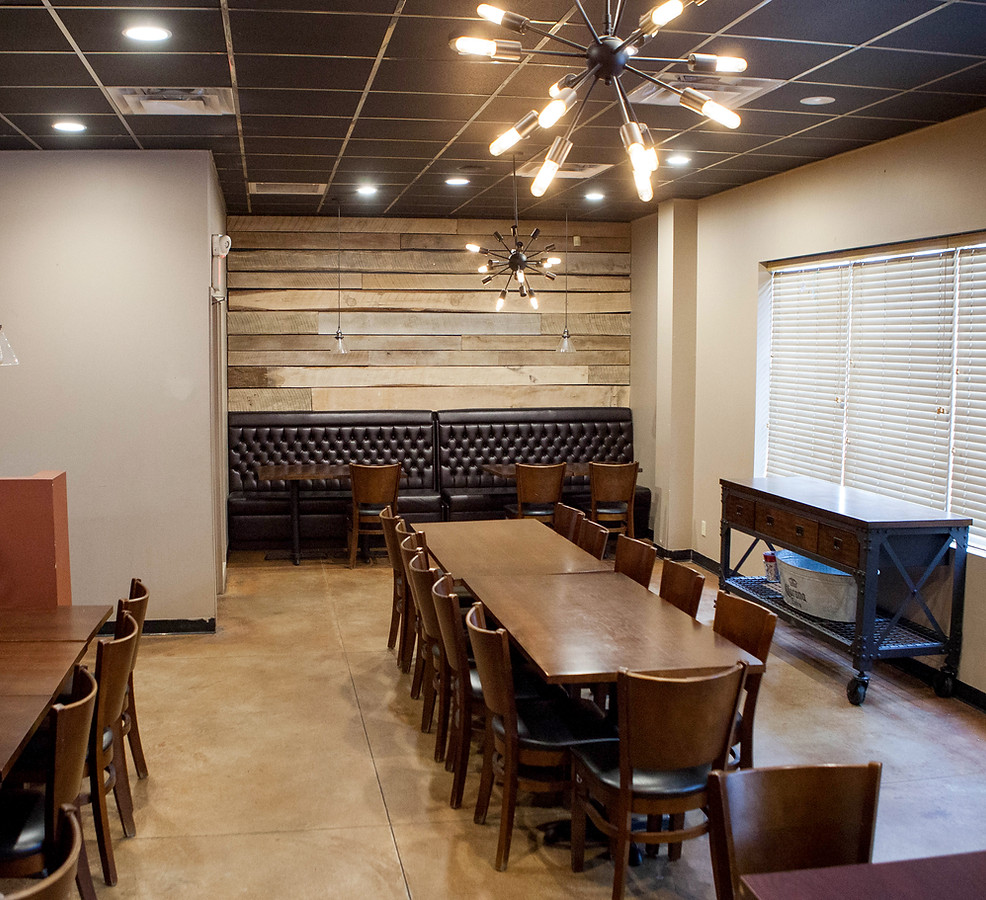
EVENTS & PARTIES
We host local pool tournaments, contests, fund-raisers, and special theme nights. Check in often to find out what’s coming up.
Thinking of having a party? Don’t want to deal with the headaches and mess of doing it yourself? Then have your party at our place! Whether it’s a Christmas party, Company outing, Birthday party…you name the type of party and we can host it.
Visit Today
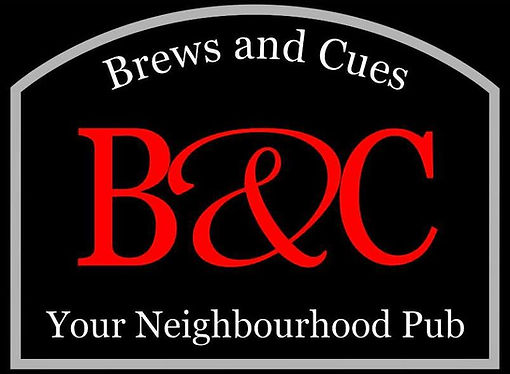
Visit Us
We’re your one-stop-shop for billiards, draft beer, good food, events & parties.
Store Hours
M-T: 11:30am – MIDNIGHT
F-Sat: 11:30am – 2:00am
Sun: Closed
